What is CBC? How does Cannabichromene affects your body? In our latest articles we gave an overview on some less known cannabinoids as HHC or delta-8 THC, as well as on the most famous ones, like THC and CBD. Today we learn more about one of the main cannabinoids in Cannabis: the CBC.
What is CBC (Cannabichromene)
CBC, spelled in full as Cannabichromene, is one of the 4 main cannabinoids inCannabis Sativa L plants. Unlike THC, Tetrahydrocannabinol, Cannabichromene is nonpsychoactive and non-psychotropic for humans. Besides the Cannabis Sativa, CBC can be found in other plants such as Rhododendron, some kinds of mushrooms and the so called “liverworts” (succulents that resemble moss).
Short hystory of CBC
CBC was discovered and isolated for the first time in 1966 by an extraction process on hashish with hexane, later also through a percolation with benzene directly from cannabis plants. Because of its peculiar qualities and benefits, from 2008 various medicinal preparations containing high quantities of Cannabichromene were released on the market.
How do you get CBC
The process through which CBC forms in the plants of Cannabis follows the same principle of the most known CBD and THC. First the plant produces a precursor called CBGA, cannabigerolic acid. This precursor, based on the action of the enzymes present in the different strains of Cannabis, forms 3 main cannabinoids in different concentration:
- THCA (tetrahydrocannabinol acid);
- CBDA (cannabidiolic acid);
- CBCA (Cannabicromenic acid).
Through a process of decarboxylation by exposure to heat or ultraviolet rays , CBCA finally becomes CBC. The process is very similar to the one that brings to the formation of THC and CBD.
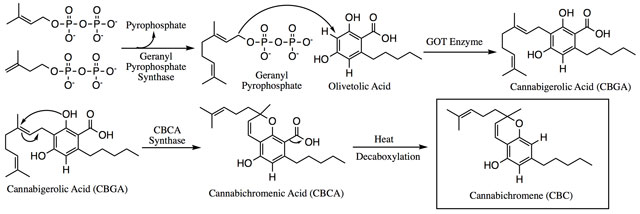
Biosynthesis of CBC: source Wikipedia
How does CBC affects the human body
Cannabichromene is a non-psychotropic cannabinoid. It doesn’t give the typical “buzz” or intoxication. This is due to its limited capacity to bind to the CB1 receptors of the endocannabinoid human system. Its benefits derive from its capacity to bind to secondary receptors such as the TRPV1 (vanilloid receptor) that also binds to the capsaicin (active ingredient of pepper). CBC also binds to the protein receptor TRPA1 that is one of the main receptors connected to pain.
When CBC binds to these receptors, high quantities of endocannabinoids get released in the body, one of them being the anandamide, active in the areas of the brain that control memory, motion, motivation and high-level cognitive functions.
Use of Cannabichromene for therapeutical and medical purposes
Thanks to its properties and effects on the endocannabinoid system,Cannabichromene is a research topic and it’s already used to help treat some diseases.
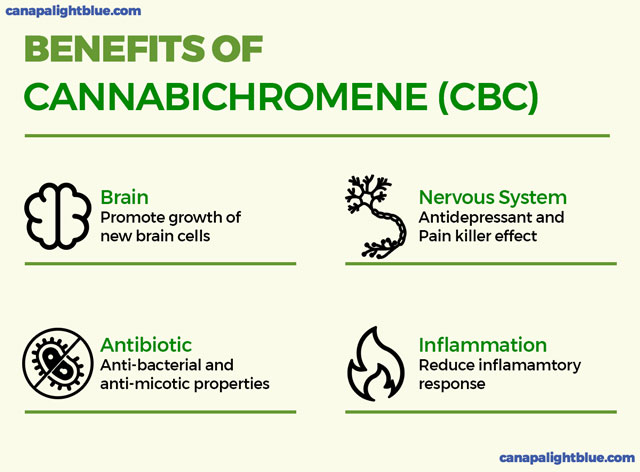
Effects of CBC on pain and inflammatory conditions
Clinical scientific studies have demonstrated that Cannabichromene can block pain and inflammation caused by some forms of arthritis. Its action, different from the other non-steroidal anti-inflammatory drugs (NSAIDS), seems to be free of their typical side effects. An animal based medical research showed how CBC in combination with THC is able to “control” the inflammation more than just THC or CBC.
Cannabichromene as anti-depressant
A clinical study in THC, CBD and CBC showed how these 3 cannabinoids together have a powerful anti-depressant effect. There are insufficient data at this time to determine whether CBC alone can actually result effective in treating depression, but its combination with the other 2 main cannabinoids seems to amplify its beneficial effects.
CBC and cancer
Its association with the human endocannabinoid Anandamide, Cannabichromenemightbecome a great ally in fighting cancer. Anandamide has well known effects in reducing the growth of breast cancer, in labs (in vitro experiments) and in patients (in vivo). In this respect, Cannabichromene may be considered as a chemopreventive agent.
A research in 2006 analyzed CBC as a potential anti-cancer alternative to THC, since the latter has well known psychotropic effects, making it difficult to use on immuno-compromised patients. For now, researches showed how, after CBG, CBC is the second most effective anti-cancer cannabinoid, for it being apparently able to inhibit the proliferation of cancerous cells.
Are you suffering from acne? CBC might help!
If you are suffering from acne you know all too well how annoying a condition it can be, eventually becoming an impediment in everyday life. Then you’ll be pleased to hear CBC, as CBD too, have beneficial effects on this condition, as proven by medical researches. Cannabichromene has powerful anti-inflammatory effects and it can recduce the production of sebum in the overactive sebaceous glands responsible for acne. Cannabichromene can reduce the level of arachidonic acid, which produces lipid. More research is needed, but CBC might soon become available for the treatment of acne.
Cannabichromene is good for the brain
In a study with trial on rats, in 2013, researchers foundCannabichromene had positive effects on neural precursor stem-cells, essential to maintain the brain fully functional as well as in good condition. The presence of CBC make this kind of cells available helping maintaining the homeostasis of the brain. In fact, neural precursor stem-cells, become astroglial cells, the most common kind of cells in the central nervous system. Astroglial cells play an important role in regulating neurotransmitters and prevent brain oxidative stress, . Moreover, these cells have an anti-inflammatory and anti-toxic effect which is very important when treating diseases such as Alzheimer’s.
Conclusions
As we have just seen, Cannabichromene is a very important cannabinoid. Its therapeutic potential is still being studied in depth and it’s too soon to state with certainty that it is effective and safe to use. As for the other cannabinoids, research on CBC “suffers” from all the limitations imposed by the prohibitionist laws. We hope that, as time passes and less restrictive laws are approved, researchers will be able to discover the full potential of Cannabichromene. For now, consumers interested in this product will have to rely on the little information available, mostly coming from pharmacological trials conducted by private companies. Anyways, if you’re interested in the therapeutic potential of CBC, we recommend you get as much information as possible and consult with your doctor first.

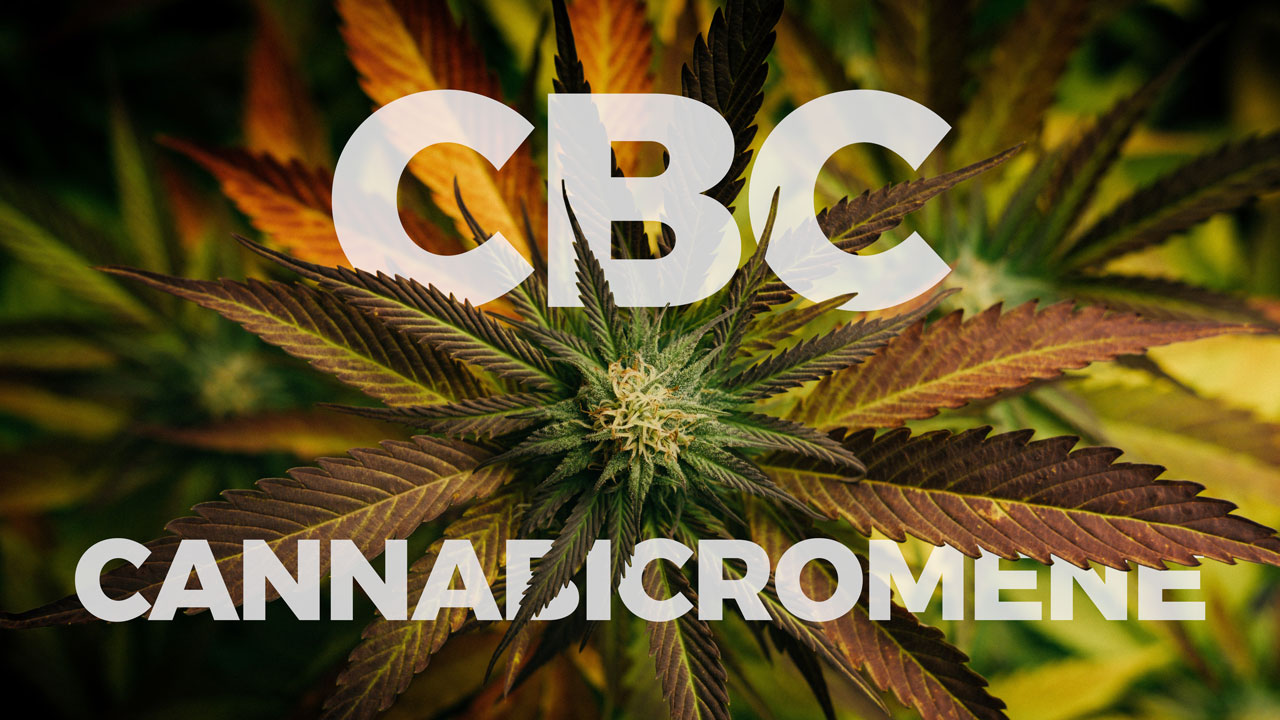
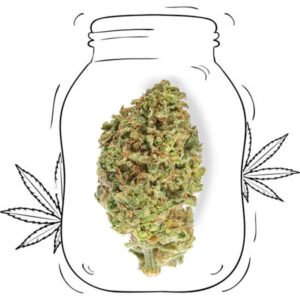
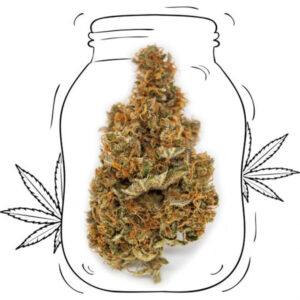
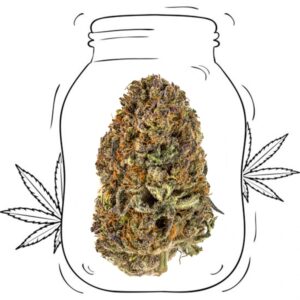
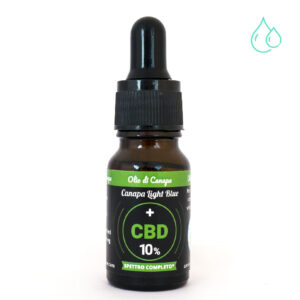
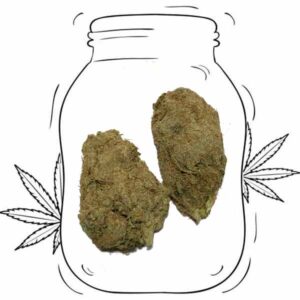
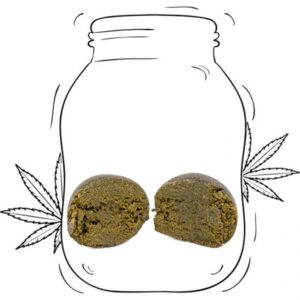
0 Comments